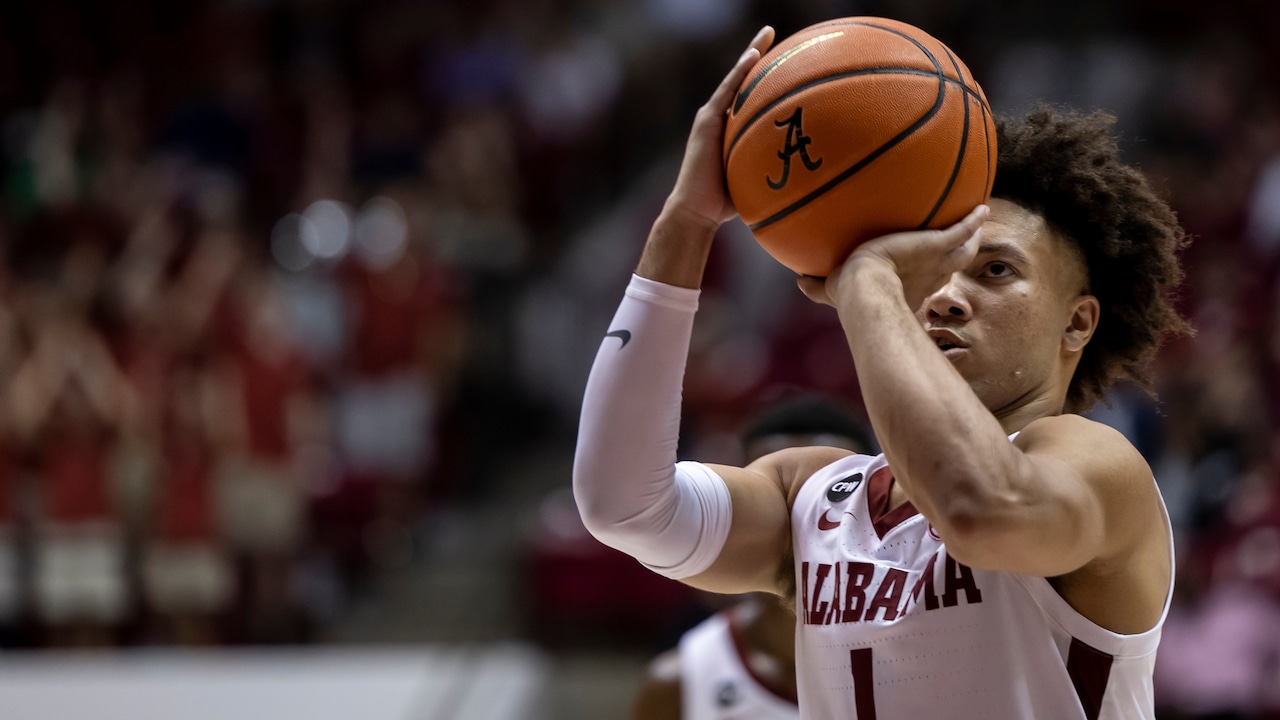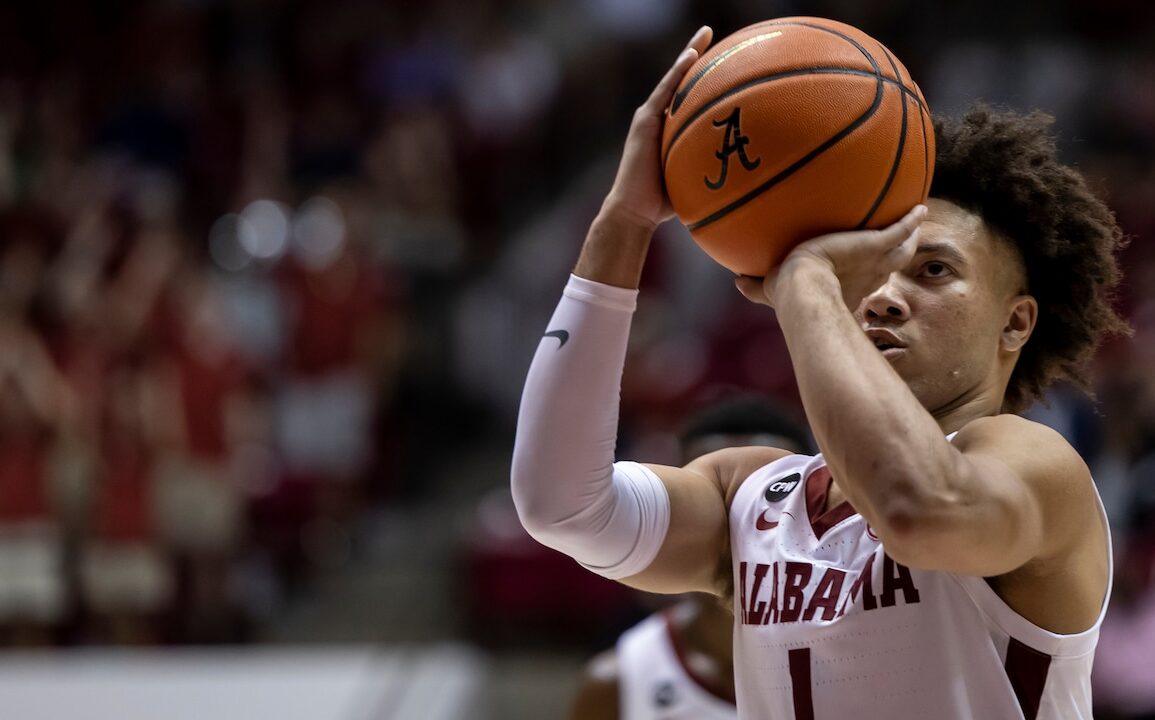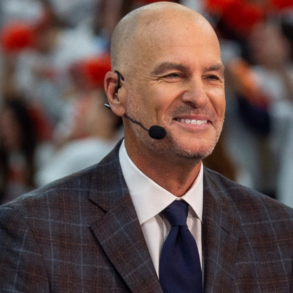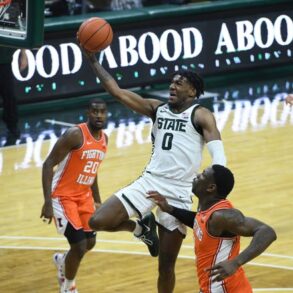
We’ve all been there. Your college basketball team is playing a crucial conference game at 8 p.m. All day, the anticipation rises as tip-off approaches.
It’s 7:59. Time to tune in and just as you do … dagger. There are still 6 minutes and 21 seconds to play in the 6 o’clock game that’s a banger.
It could go on all night. Four-letter obscenities to four-letter networks as you scramble to find the password for the app.
This scenario feels not just common anymore. It’s the default setting.
Right?
Are college basketball games really getting longer? Have they outgrown the traditional two-hour timeslot assigned by the networks?
Well, yes.
The statistical savant of the sport, Ken Pomeroy, recently published a post on his Substack on the very topic we were already investigating. Under the heading “The game times, they are increasing,” Pomeroy laid out some of the data he’s compiled from box scores of regular-season, power-conference games that didn’t go into overtime.
In 2019-20, the average game spanned 1 hour, 59 minutes and 38 seconds.
Just under the wire.
Move ahead to this season, it’s well over.
The 2024-25 average is up to 2 hours, 4 minutes and 35 seconds.
That might not seem significant but those numbers have gone up every year in between. Five minutes total and we’re just talking averages, not outliers that will mangle a TV schedule and send living rooms into a tailspin.
And that 2:04:35 is on the low end of the spectrum when looking at both Alabama and Auburn games this season.
Through 24 Crimson Tide games, the average is close to 2 hours and 14 minutes. Isolate that to SEC games, it’s up to 2 hours and 18 minutes.
That includes one of the longest regulation games in memory — Alabama’s Jan. 11 win at Texas A&M. The 40 minutes from tipoff to the final buzzer spanned 2 hours and 52 minutes. That’s longer than the overtime win over Houston that ran 2 hours, 44 minutes.
Auburn’s games aren’t quite as long. Overall, the 24 games averaged 2 hours and 9 minutes. League games alone are 2 hours and 16 minutes.
So, two questions:
1. Why?
2. How can the networks adapt?
First, a number of factors can extend games. Alabama-Texas A&M involved a season-high 58 combined fouls. That lead to 40 free throws for the Tide and 48 for the Aggies. That slows the pace.
In fact, each of the longest games of Alabama’s season included high foul counts, which stopped the clock and led to untimed foul shots.
There’s a pattern there, too. Alabama is No. 4 in free throws attempted per game (26.7) and No. 283 in free throws allowed (21.3) per game. That adds up.
It’s a reality with the Crimson Tide’s pace of play, which, is an outlier of its own.
Alabama averages 78.3 possessions per game — the most in the nation.
The Crimson Tide isn’t draining much of that shot clock, so games will naturally run longer on the wrist watch.
Auburn is No. 154 in possessions per game with 70.8.
Then there are the official reviews where referees huddle at the monitor, talk amongst themselves, huddle, talk, repeat. While there aren’t statistics that count reviews, they’ve killed more rhythm than student sections and hip hop beats.
The closer the game, the more they review.
All of this is outside the control of the networks broadcasting the games. They certainly aren’t asking for more dead air while finger tips are enhanced for evidence of glancing blows or deliberations over the flagrancy of a foul.
They’re caught in the middle because expanding the broadcast window would have day-long impacts on Saturdays. Nobody’s tuning in to watch studio hosts kill time between games when the objective is to have no gap between handshakes and tipoffs when back-to-back games are scheduled.
There are provisions in the mega-million TV deals that allow networks to bump back tip times by a few minutes if a previous game runs long but there’s only so much wiggle room. For games on the ESPN networks, there’s sometimes the option to begin a game on ESPN News network or the ESPN app, but that’s not the seamless transition it or the viewers prefer.
But short of edicts from the NCAA or conferences to officiate games looser or scale back the reviews, the overlap will continue.
Michael Casagrande is a reporter for the Alabama Media Group. Follow him on Twitter @ByCasagrande or on Facebook.
This post was originally published on this site be sure to check out more of their content.






